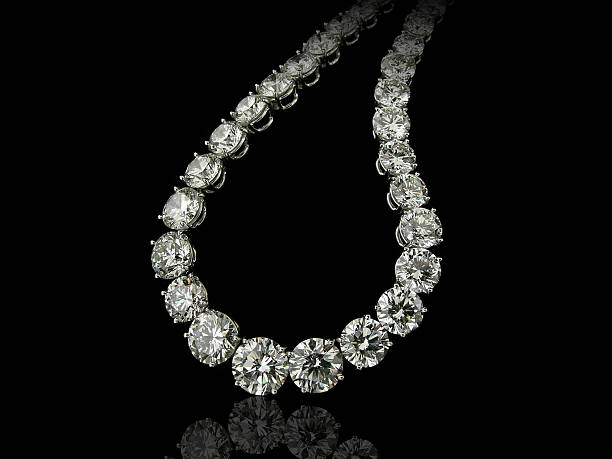Keys To Determining Diamond Clarity All Entries

One of the most important aspects of determining diamond clarity is to get an objective appraisal from a professional gemologist you can trust. Some jewelers can give you estimates just by eyeballing the diamond, but that doesn't mean you can always trust their assessment. Here are important points to know about the factors that affect diamond clarity.
The Nature of Diamond Clarity
Diamond clarity is professionally measured in the jewelry industry using the clarity scale established by the Gemological Institute of America (GIA). Clarity is one of the "4 C's" that the GIA uses to evaluate diamond quality, as the others are color, cut, and carat weight.
The grades of GIA clarity range from "flawless," which is ideal, to "I3," indicating inclusions, which are imperfections. A flawless diamond has no inclusions, whereas an I3 rating means the gem is full of imperfections, such as minor cracks. Usually the human eye can spot I3 inclusions. Gemologists use microscopes with 10 times magnification to identify these subtle flaws. They will first check to see if the diamond was treated to enhance clarity.
The GIA Clarity Scale encompasses the following grades:
- Flawless (highest grade) and Internally Flawless
- Very Very Slightly Included (VVS1 and VVS2)
- Very Slightly Included (VS1 and VS2)
- Slightly Included (SI1 and SI2)
- Included (I1, I2, and I3)
How Diamond Clarity Affects Value
The goal of determining diamond clarity often equates with estimating its value, along with cut, color, and carat. Diamonds with little to no inclusions are very rare, which is why they are priced much higher than diamonds full of inclusions. But it's also possible for a gem with high clarity to be offset by a poor quality cut or too much color, as colorless diamonds can command the highest value.
VS1 and VS2 diamonds and those with higher grades are extremely valuable because the minor inclusions and blemishes are difficult to see by the human eye. By contrast, SI1 and SI2 diamonds tend to have inclusions that are more obvious. The lowest rated group, I diamonds, definitely have visible inclusions.
Small diamonds are more challenging to judge inclusions with just the eye. That's why gemologists use microscopes to get a better view. When you get a diamond appraised, make sure it's done by a GIA-based gemologist and not just a random jeweler or pawn shop clerk. True gemologists operate in the spirit of integrity instead of trying to take advantage of a newbie's lack of knowledge about the 4 C's.
Conclusion
It's helpful to understand the method jewelry professionals use in determining diamond clarity, which is one of the four main factors that affect overall gem value. Contact us at Ralph Mueller & Associates to learn more about what you should know regarding buying or selling diamonds.